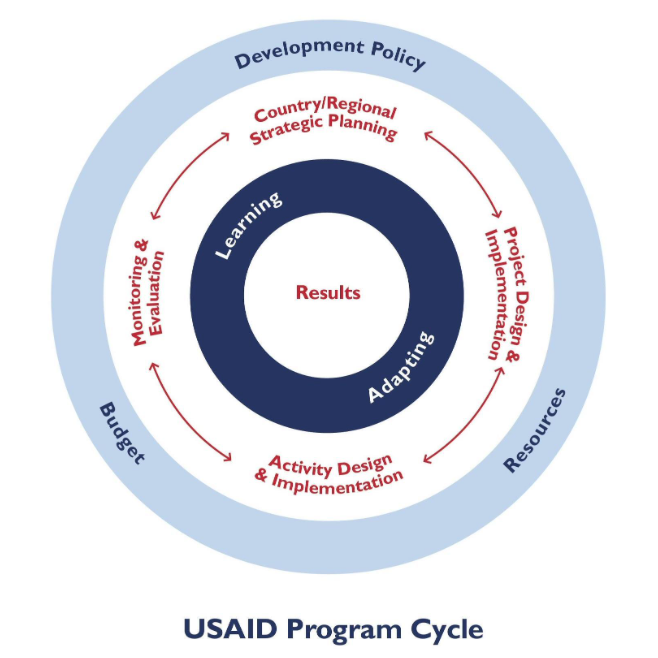The Program Cycle is the operational model for planning, delivering, assessing, and adapting development programming in a given region or country to advance U.S. foreign and economic policy. First introduced in 2011 by the Bureau for Policy, Planning and Learning (PPL), it improves the Agency’s ability to make decisions based on evidence to achieve more effective and sustainable results.
The Program Cycle is codified in USAID’s ADS Chapter 201 and understood and visualized through a number of different, interrelated components (see graphic). The cycle shows how the different tasks conducted throughout the Program Cycle come together to improve results. It establishes the linkages between the high level strategy for a country and region (articulated within a CDCS or RDCS), the project activity design that guides activity implementation, and the MEL and CLA frameworks that help the Agency improve and adapt programming throughout implementation. Underpinning the Program Cycle are four implementation principles:
- Apply analytic rigor to support evidence-based decision making.
- Manage adaptively through continuous learning.
- Promote sustainability through local implementation and financing.
- Use a range of approaches to achieve results.
There have been a number of changes to ADS 201 and the Program Cycle since 2011. USAID has a number of different resources on how the ADS 201 has changed. This video provides a clear overview of the Program Cycle.

Previous (Project Starter Opening Page / Next (CDCS)
For more information, please contact Paul Fekete.
FEATURED |
|---|
Quick links:ADS 201: Program Cycle Operational PolicyTwo quick access products were released along with the updated ADS: ADS 201: Fact Sheet |
ALSO SEE |
| USAID's revision of the ADS involves more than changes in specific requirements, it calls for rethinking how development assistance is conceptualized. Drawing on its Local Systems Framework, USAID explains in the technical note below that appling systems thinking to development involves five dimensions, or the 5Rs: Results, Roles, Relationships, Rules and Resources. |
